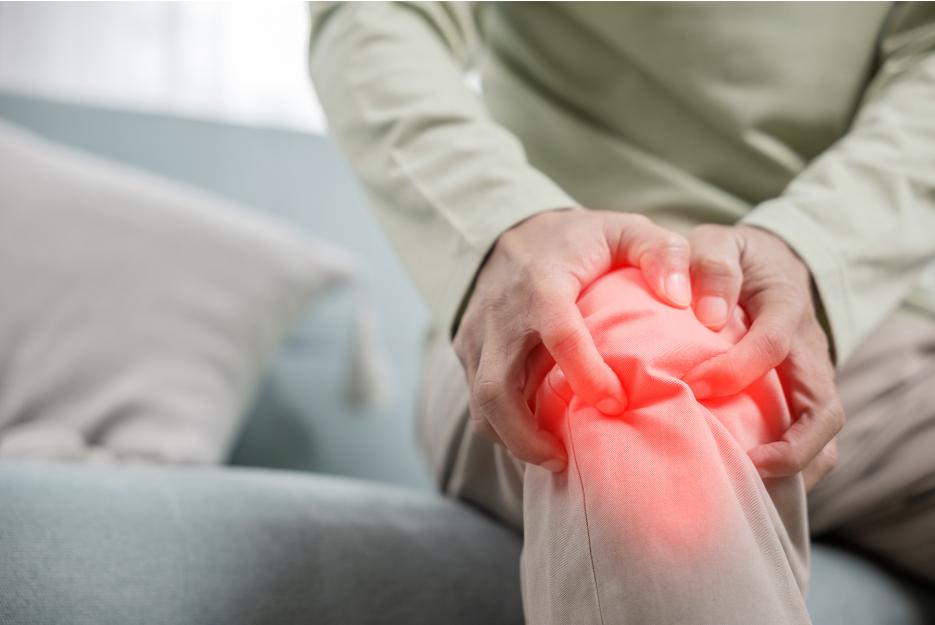Osteoarthritis
What Is Osteoarthritis?
Osteoarthritis is commonly known as wear and tear arthritis and is a frequent cause of joint pain and mobility restrictions, especially in older adults. Traditionally, it was thought to result from the gradual breakdown of the cartilage covering the ends of bones in a joint. However, in recent years, this has been redefined to include the involvement of all components of the joint, including the joint lining, ligaments, bones, and muscles, alongside the thinning of cartilage. It is also understood that the body’s response to repair joint damage can contribute to the structural changes seen in osteoarthritis, which can restrict movement and cause pain.
Osteoarthritis can affect any joint in the body but often impacts the knees, feet, and hips due to their frequent use and the forces they bear in daily activities. While it is more common in older adults, about 2.5% of all arthritis sufferers (3.6 million Australians) are under 45 years old.

Table of Contents
What Happens In Osteoarthritis & Who Is At Risk?
- Age: The prevalence of arthritis significantly increases with age.
- Gender: Arthritis is more common in women than in men.
- History of injury: If you’ve previously injured a joint or had surgery, it raises the likelihood of developing osteoarthritis in that joint.
- Genetics: Certain genes are associated with a higher risk of arthritis, including a gene that causes a mutation in collagen.
- Natural joint differences: Variations in joint shape or structure can predispose you to osteoarthritis.
- Weight: Since weight directly impacts the pressure on joints during movement, being overweight increases the risk of developing osteoarthritis.
- Overuse: Repeatedly performing movements that load the joints, such as in certain work environments, can also increase the risk of osteoarthritis.
When our joints are healthy, all of their components work together smoothly, allowing for pain-free, frictionless movement. This includes the cartilage, which provides a slippery surface for the bones to glide smoothly, as well as the synovial fluid and joint lining. When osteoarthritis begins to affect a joint, the cartilage thins, and the bone surface becomes rougher. The body’s repair process can also lead to additional structural changes, such as thickening and stretching of the joint capsule, thickening and inflammation of the synovium, and the development of bone spurs within the joint.
Visit Us Today
Hope Island
Phone: 07 5510 9222
Located within Hope Island Marketplace Medical & Skin Clinic, 99-103 Broadwater Ave Hope Island QLD 4212
Jimboomba
Phone: 07 5546 9766
Located Within Jimboomba Medical Centre, Unit 1/69 Cerina Cct, Jimboomba QLD 4280
Beenleigh
Phone: 07 3287 2224
Located Within Beenleigh Mall Medical Centre, Shop24A, 40/68 Main Street, Beenleigh QLD 4207
Eagleby
Phone: 07 2889 1666
Located Within Eagleby Family Practice, 5/120 River Hills Rd, Eagleby QLD 4207
Harristown
Phone: 07 4635 6111
Located Within Toowoomba Medical Centre, 146 Drayton Road, Harristown QLD 4350
Marsden
Phone: 07 3067 2370
Located Within Marsden Family Doctors, Shop 28/55-77 Chambers Flat Rd, Marsden QLD 4132
Keperra
Phone: 07 3355 4082
Located Within Keperra Medical Clinic, 14 Dallas Parade Keperra QLD 4054
Coomera
Phone: 07 5573 5663
Located Within Doctors @ Coomera Central, Shop 6, 21 Coomera Grand Drive, Upper Coomera, QLD 4209
Newtown
Phone: 07 4633 8700
Located Within Ochre Medical Centre Wyalla, Shop 20, 238 Taylor Street, Newtown QLD 4350
Signs & Symptoms Of Osteoarthritis
Joint pain and stiffness are the primary symptoms of osteoarthritis, and their severity can vary widely from person to person and even from week to week. You may notice your joints creaking or reduced flexibility. Swelling in the joints can also occur, and over time, the shape and appearance of the joint may change. Many people with osteoarthritis find that factors like colder weather—or even the time of day—can influence the intensity of their symptoms.
Diagnosing osteoarthritis is straightforward, as it involves a combination of your symptoms and medical imaging to confirm changes in the joint. The sooner you receive a diagnosis, the sooner you can take the right steps to improve comfort and minimize the long-term impact of arthritis on your body.
How To Treat Osteoarthritis
Once changes to the integrity and structure of your joint occur, they are generally irreversible. However, osteoarthritis is a gradual process that worsens over time, and there is plenty that can be done to slow its progression and manage painful symptoms. With the right approach, you can stay comfortable, supported on your feet, mobile, and independent. For arthritis affecting your feet and legs, the following strategies can help:
- Footwear: You don’t need to switch to bulky shoes. The key is choosing shoes that support your foot posture, offload any painful or prominent joints, cushion your feet to better distribute pressure while walking, and accommodate other issues like bunions.
- Custom foot orthotics: We use orthotics to significantly improve comfort and mobility. Each pair is prescribed after a comprehensive assessment with your podiatrist, who understands your feet’s unique structural and functional needs. Our orthotics are designed using a 3D scan of your feet, ensuring a perfect fit and no guesswork.
- Physical therapy: Low-impact strengthening and stretching exercises help maintain joint function, strength, and flexibility.
- Activity modification: Depending on the severity of your symptoms, we may recommend adjustments to your routine to help slow arthritis progression. For example, if long walks are causing pain, we may suggest shorter walks combined with pool-based exercises to reduce joint stress.
Enquire Now
Not The Condition You Are Looking For?
Find out more about the conditions we treat by clicking below.
